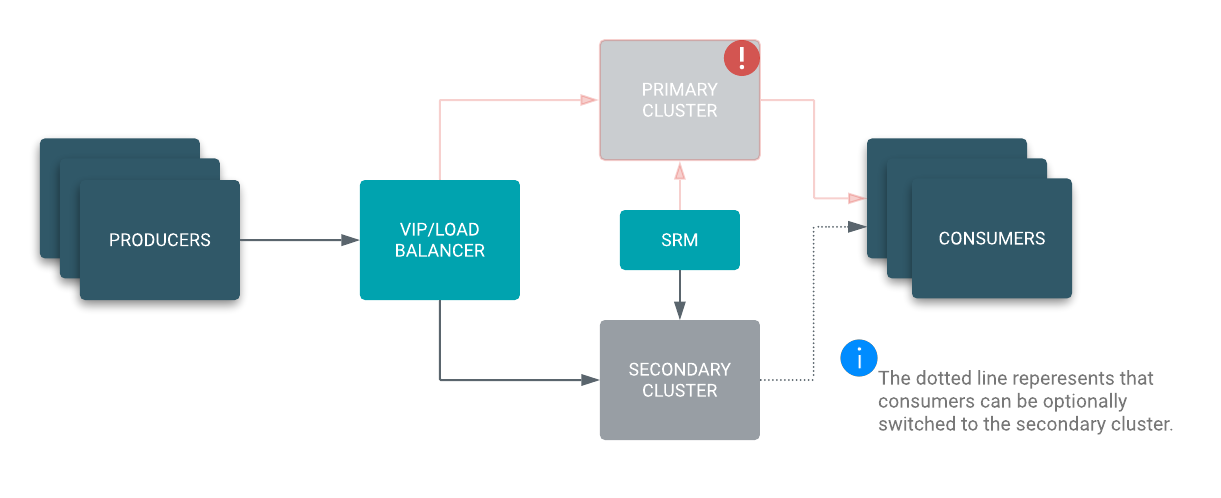Active / Stand-by Architecture
Active / Stand-by architecture example for SRM.
In an Active / Stand-by scenario, you set up two Kafka clusters and configure SRM to replicate topics bidirectionally between both clusters. A VIP or load balancer directs your producers to ingest messages into the active cluster from which consumer groups are reading from.

In case of a disaster, the VIP or load balancer directs the producers to the stand-by cluster. You can easily migrate your consumer groups to start reading from the stand-by cluster or simply wait until the primary cluster is restored if the resulting consumer lag is acceptable for your use case.
While the primary cluster is down, your producers are still able to ingest. Once the primary cluster is restored, SRM automatically takes care of synchronizing both clusters making failback seamless.

Implementing an Active/Stand-by architecture is the logical choice when an existing disaster recovery site with established policies is already available, and your goals include not losing ingest capabilities during a disaster and having a backup in your disaster recovery site.
